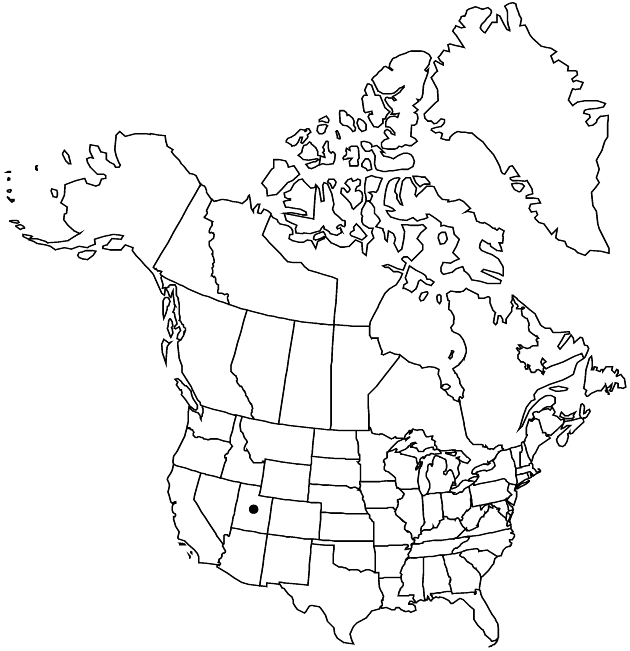Townsendia mensana
Contr. W. Bot. 13: 15. 1910.
Perennials, 1–3 cm (± pulvinate). Stems ± erect; internodes 0.1–1 mm, ± pilose. Leaves basal and cauline, blades narrowly oblanceolate to lance-linear, 5–40+ × 0.6–2.5+ mm, not fleshy, faces ± strigoso-sericeous to strigose. Heads ± sessile. Involucres ± campanulate, 7–10 mm diam. Phyllaries 25–50+ in 4–5+ series, the longer narrowly lanceolate, 6–8+ mm (l/w = 5–6), apices acute, abaxial faces sparsely strigillose or glabrate. Ray-florets 13–21+; corollas white adaxially, laminae 4–8+ mm, glandular-puberulent abaxially. Disc-florets 40–60+; corollas (3.5–) 4.5–6 mm. Cypselae 3–3.5 mm, faces hairy, hair tips glochidiform; pappi persistent; on ray cypselae 15–35 subulate to setiform scales 0.5–1.5 or 4–5 mm; on disc cypselae 15–35 subulate to setiform scales 4–6.5 mm.
Phenology: Flowering May.
Habitat: Openings with junipers and pinyons
Elevation: 1700–2700 m
Discussion
Of conservation concern.
Selected References
None.
Lower Taxa
"broader" is not a number.
